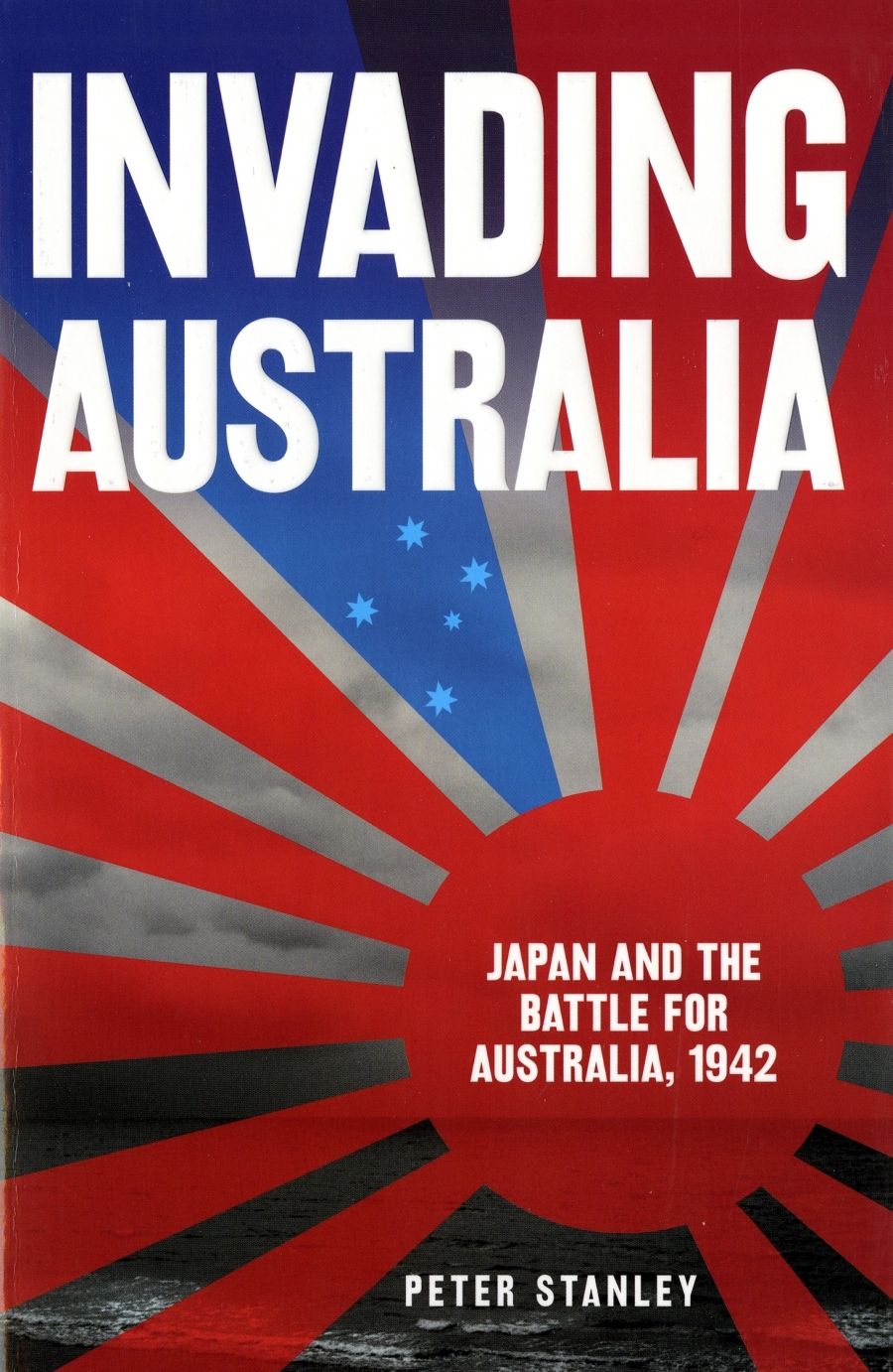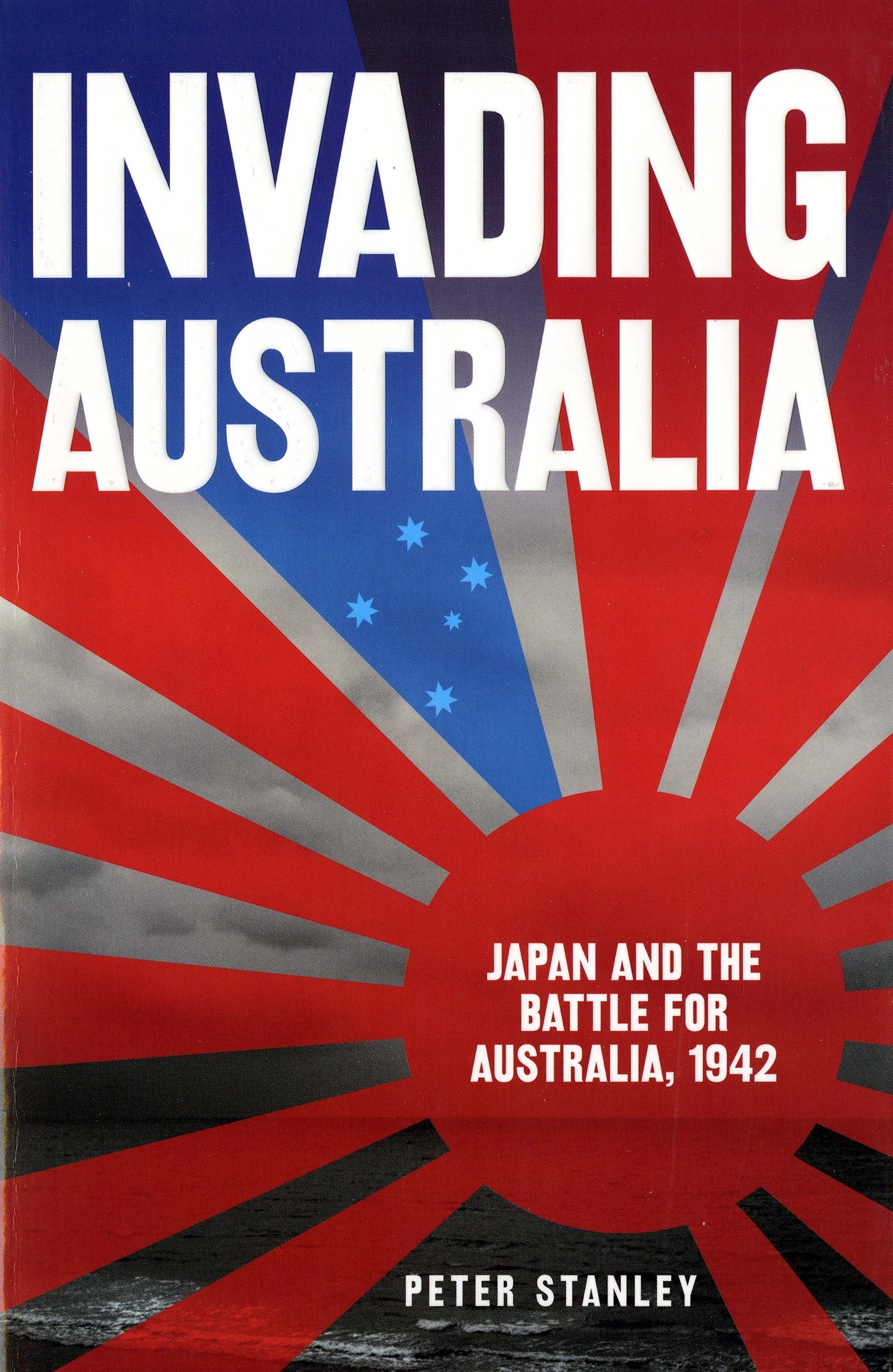
- Free Article: No
- Contents Category: Australian History
- Custom Article Title: Contested battle
- Review Article: Yes
- Article Title: Contested battle
- Online Only: No
- Custom Highlight Text:
Antoine Capet’s pithy observation that commemoration is the continuation of history by other means neatly defines the focus of Peter Stanley’s latest book and the problem that he sets out to grapple with. The recently successful advocacy of a ‘Battle for Australia’ annual commemoration flies in the face of the historical record and the evidence that supports it, but the advocates of the popular notion that the Japanese stood poised to invade Australia in 1942 have never allowed the facts to get in the way of a firmly rooted belief.
- Book 1 Title: Invading Australia
- Book 1 Subtitle: Japan and the battle for Australia, 1942
- Book 1 Biblio: Viking, $35 pb, 307 pp
- Book 1 Cover Small (400 x 600):

- Book 1 Cover (800 x 1200):

As World War II recedes in time, a number of ahistorical propositions have come to influence the ways in which Australians interpret, or remember, the conflict. The notion of British ‘betrayal’ of Australia at the fall of Singapore in February 1942 is a popular one; it totally ignores the preceding two decades of wishful thinking masquerading as defence policy on the part of successive Australian governments. The ‘lions’ of the hapless 8th Division captured at Singapore were allegedly surrounded by British and Indian ‘donkeys’. This overlooks the failures of command and leadership that started at the very top of the Australian formation. The naval action in the Coral Sea saved Australia from an invasion fleet (which was not heading for Australia in any case), while Kokoda, grim business that it unquestionably was, stopped the Japanese southward advance single-handedly (what of simultaneous American fighting on Guadalcanal?), and so on.
Perhaps the most pernicious belief, and one that lies at the centre of Stanley’s book, is the notion that the war in the south-west Pacific was essentially a ‘battle for Australia’. In 1940 Britain was threatened by imminent invasion. The Germans were gathering troops and equipment at the Channel ports, and merely waiting for the opportunity to cross the Channel and mount the invasion after gaining local air and sea superiority. In 1942, so the argument goes, Australia was faced with the same situation at the hands of the Japanese.
Despite what some people persist in believing, Australia was not, and was never intended as the primary target of Japan’s southward drive. Japanese strategy, such as it was, was keenly contested between the army and navy, each of which had its own priorities. For the army, the focus of the war was China, where fighting had begun in 1931 and was intensified and widened from 1937, and on the Soviet Union, whose forces had dealt the Japanese a sharp lesson at Nomonhan in 1939–40. The Imperial Japanese Navy’s focus was on the United States, initially the Pacific Fleet based in Hawaii, and the forces under MacArthur’s command in the Philippines. The southward drive through the European colonial territories of South-East Asia was designed to secure raw materials – oil, tin and rubber – to further Japan’s war in China in the face of American hostility over that same policy and the trade restrictions that ensued. Australia was geographically and metaphorically peripheral to these concerns.
Almost from the beginning of the Pacific War, the United States considered utilising Australia as a base area from which to build up forces for the drive north to reinforce, and then retake, the Philippines and, ultimately, to conquer the Japanese home islands. It was for this reason that sites in Australia from Darwin to Sydney came under episodic attack by Japanese air and naval units: their targets were American ships and aircraft more often than not. Japanese intent was twofold: to interrupt the build-up of such air and naval assets as could interfere with Japanese activities further north; and to isolate Australia through the creation of an island barrier through New Guinea and the Solomons and into the South Pacific. Direct invasion was beyond their capabilities; it was a distraction from more pressing strategic concerns further north, and was unnecessary in any case.
That Australians did not comprehend this in 1942 is not surprising. The Curtin government used the spectre of invasion to mobilise a sluggish domestic front that had been insufficiently committed between 1939–41, and continued to talk up the prospects of invasion long after Curtin knew this to be untrue. Stanley points to the way in which the popular perception of invasion fed off a half century of speculative fiction and racialist fears, and assumptions that almost pre-ordained a belief in the enormity of a Japanese threat when one apparently appeared.
None of this is to suggest that Japanese intentions, much less behaviour, in the Pacific War were benign. They were anything but. Japanese militarism was responsible for a war of imperial conquest fought with a viciousness and brutality that has few parallels in modern times, and its principal victims were Chinese, Korean, Filipino, Malay and, incidentally, white prisoners of war and civilian internees who were decidedly in the minority on the balance sheet of brutality. But the war against Japan was not fought in isolation, and was not fought by Australia in isolation. World War II was fought against fascist barbarism, tyranny and racialism on a global front, and the Pacific War was a part of this whole.
Stanley argues that the push for recognition of a ‘battle for Australia’ seriously distorts our understanding of World War II, in the Pacific and elsewhere, and diminishes the role of Australians who fought outside the south-west Pacific. Aided by the politics of republicanism and the dubious historical assertions of Paul Keating while prime minister (prominent but by no means alone), many Australians regard the war in Europe as a British affair, a perspective reinforced by the simple-minded belief that Australia has fought ‘other people’s wars’ when not acting in the direct defence of Australian territory.
There is also, Stanley suggests, a growth in a rather unattractive Australian particularism that assesses issues based on a narrow, even selfish, parochialism. ‘What did we do?’ and ‘how did it affect us?’ are fair questions, but not when considered in isolation. Our military history, or at least the popular variety, has demonstrated this tendency for some time in dealing with the Great War; it seems now to have extended its baleful influence to the next war as well.
Those who wish to continue to assert the existence of Japanese plans for the invasion of Australia in 1942 need to table their evidence, and accept scholarly scrutiny of that evidence. Stanley’s almost forensic analysis of the claims advanced in support of invasion has effectively demolished their evidentiary basis, such as it is, and criticism of his book will need to do rather better than merely reassert the existing position. Declaring a ‘battle for Australia’ commemoration is about politics and electoral advantage, not history or a better understanding of our collective past. It may turn out to be good politics, but it is certainly lousy history.


Comments powered by CComment